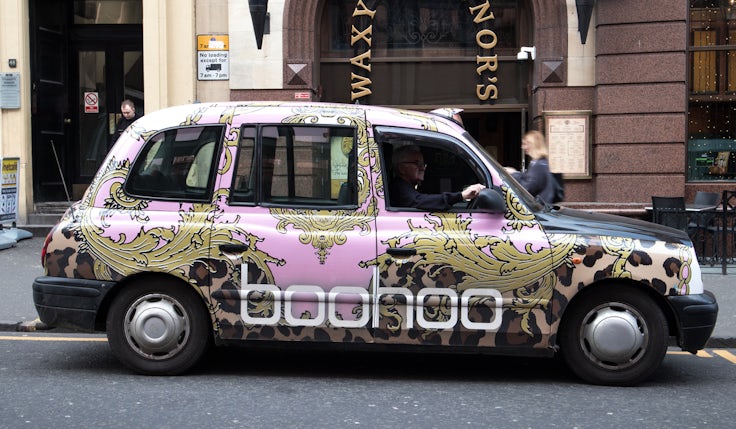Brand value impacted by gap between sustainability performance and perception
Microsoft and Lidl are the big winners in Brand Finance’s inaugural Sustainability Gap Index, while it suggests Tesla could face a potential backlash.

Brands, including Microsoft, whose sustainability performance outstrips its sustainability perception could be leaving money on the table unless they better communicate their green credentials, new research shows.
The Sustainability Gap Index has been created by Brand Finance and aims to quantify the value that can be gained or lost by brands through their sustainability efforts. It shows that ‘green-hushing’, which is the act of keeping quiet about your sustainability targets and actions instead of making them a core part of your brand identity, can be just as detrimental to a brand as greenwashing.
Microsoft has topped the inaugural Index as its net value is a positive $1.5bn meaning the brand could generate up to that value if it were to communicate its sustainability measures better. Other brands who have a positive gap value include Walmart (2nd), Pepsi (7th) and Lidl (10th).
It is Tesla that fares the worst, however, as its environmental sustainability perception makes up more than quarter of the value of its brand (26.9%), but its poor record on governance and social sustainability means that over $4bn of value is at risk should the public pay closer attention to those performance flaws.
Amazon, perhaps surprisingly, has the highest sustainability perception of any brand at $19.9bn but the report is keen to stress that this isn’t an assessment on its overall performance merely that the brand is perceived by the public to be committed enough to sustainability endeavours. Should perception start to outpace performance this could create problems as customers turn on the brand for failing to hit targets.
‘Nothing good ever came easy’: Can marketers marry profit growth with sustainability?
While the importance of sustainability measures both in an ethical sense and a business sense has been clear to investors and CFOs for a long time now, notes Robert Haigh, strategy and sustainability director at Brand Finance, a sticking point has been that without “articulating the case in financial terms, it can be difficult to justify the kind of investment that is required to shareholders”.
This report looks to change that by quantifying those sustainability efforts into a brand value. “Our research, even for individual businesses, shows there can be billions of dollars of financial value to be gained from enhanced action and associated communication,” he adds.
The research also factors in how valuable sustainability endeavours are when driving consideration across sectors by creating what Brand Finance dubs a Sustainability Driver Score. Engineering and construction, for example, is a sector where sustainability is low on the agenda for consumers (just 2.8% driver score) and so promoting environmental policies is going to have little effect on the brand.
Brands not born sustainable must evolve deliberatelyThe sector where sustainability is most important is luxury automobiles, which has a sustainability driver score of 22.9%, meaning that despite the inherent fuel consumption that comes from driving a vehicle, consumers are keen for brands to mitigate that as much as possible. Other sectors with a high sustainability factor include soft drinks (13.7%), supermarkets (12.6%), media (10.1%) and cosmetics (10%).
The colour of money
What these values show, according to Brand Finance, is that it’s imperative to put your money where your mouth is. They highlight the example of Microsoft which has invested heavily in sustainability by committing to be carbon neutral, water positive and zero waste by 2030. This is in addition to launching the Microsoft Cloud for Sustainability that enabled other businesses to improve operational and cost efficiencies to help them reach their sustainability goals.
Despite all of this, however, Microsoft could be argued to have never positioned sustainability as part of its brand identity allowing for growth in this space. And, if they were to do this, because of the investment it has made and the value it has already brought to the business, Microsoft wouldn’t be accused of greenwashing, it suggests. Indeed, currently, it could be ‘green-hushing’.
For Sasan Saeidi, world president and chairman at the IAA, the fear of being accused of greenwashing is causing some brands to retreat into their shell. “Trends such as ‘greenwashing’ and ‘green-hushing’ have really taken flight. Green-hushing is a consequence; it is when brands and businesses avoid talking about sustainability targets or progress due to fear of accusations of greenwashing,” he says. “One can only imagine the utter chaos that is ensuing in boardrooms over decisions pertaining to this topic. To do or not to do?”
Mark Ritson: What is the point of brand valuations if those doing the valuing are so off target?It’s a viewpoint shared by Herve de Clerck, vice-president of IAA Global, who says that “greenwashing is a double-edged sword” and while brands may initially attract environmentally conscious customers, this can lead to a lack of brand trust in the long term and harm the efforts of genuine sustainable companies.
“The negative consequences of greenwashing affect not only consumers, but all companies in the green marketplace, whether they engage in greenwashing or not,” says de Clerck. “The increasing prevalence of greenwashing has created a backlash against the concept of sustainability, and consumers may lose confidence in the green market as a result, eventually causing it to collapse.”







Comments